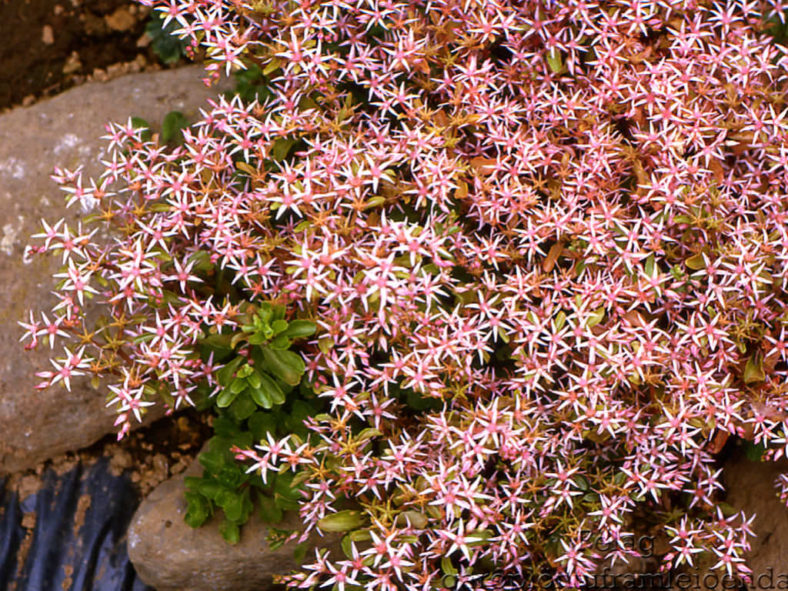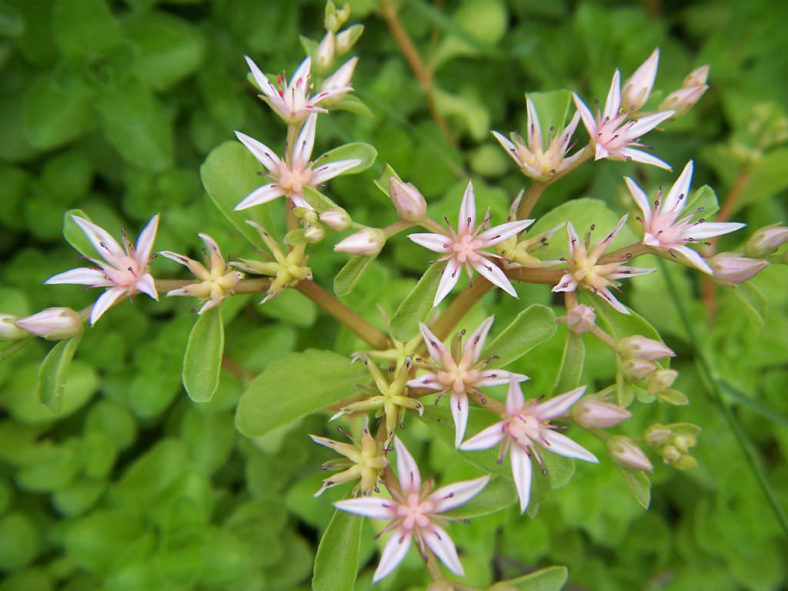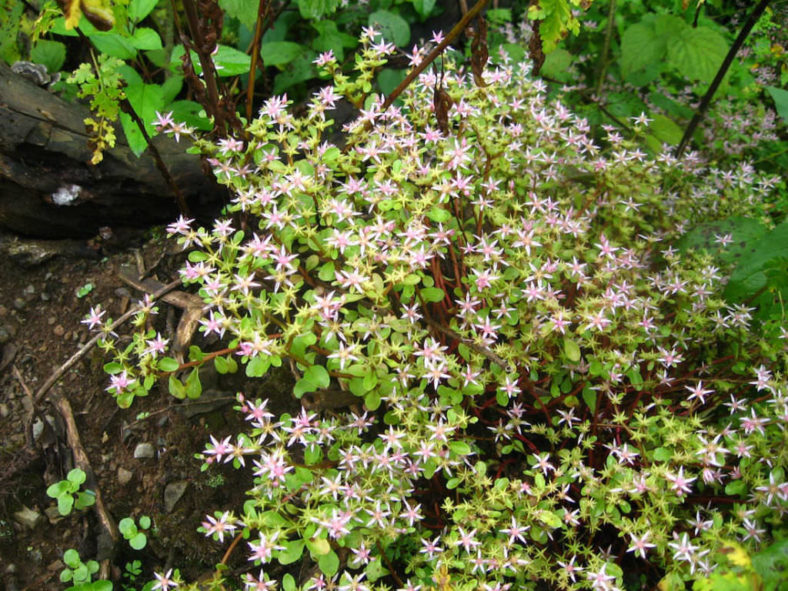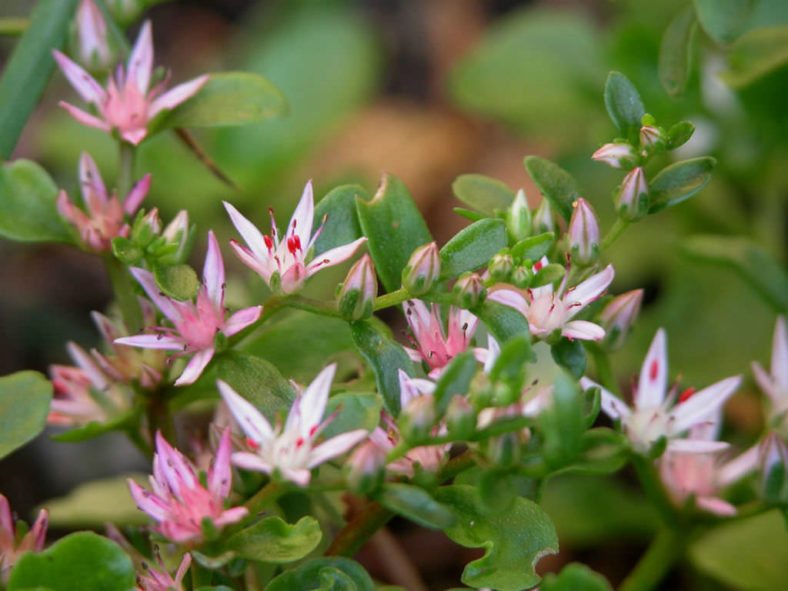Scientific Name
Phedimus stoloniferus (S.G.Gmel.) 't Hart
Common Name(s)
Stolon Stonecrop
Synonym(s)
Asterosedum stoloniferum, Phedimus stolonifer, Sedum hybridum, Sedum ibericum, Sedum stoloniferum
Scientific Classification
Family: Crassulaceae
Subfamily: Sempervivoideae
Tribe: Umbiliceae
Genus: Phedimus
Etymology
The specific epithet "stoloniferus (sto-lo-NIF-er-us)" means "bearing shoots that run along the ground and sprout roots at nodes" and refers to the stoloniferous stems and branches.
Origin
Phedimus stoloniferus is native to Turkey, the Caucasus, and northern Iran.
Description
Phedimus stoloniferus, also known as Phedimus stolonifer or Sedum stoloniferum, is a low-growing succulent with branched creeping stems that can grow up to 5 inches (12.5 cm) long, rooting at the nodes. The leaves are small, opposite, stalked, rhomboid-ovate, green to reddish-green, and can reach up to 1 inch (2.5 cm) in length and 0.4 inches (1 cm) in width.
The flowers are relatively large, star-shaped, pink, and appear in beautiful clusters in summer.

Hardiness
USDA hardiness zones 7a to 10b: from 0 °F (−17.8 °C) to 40 °F (+4.4 °C).
How to Grow and Care
Phedimus will thrive in conditions many other plants thrive in but will do just as well in less hospitable areas. These succulents have a slow to moderate growth rate, making them popular for growing as a groundcover. They also grow well in containers.
These light-loving plants grow best in full sun but can also grow in light or partial shade. They grow best in warmer environments—plant in an area of your garden that gets 6 hours of sunlight daily.
The soil does need to be well-drained. Very good drainage is essential for preventing root rot or fungal diseases.
The best way to water these plants is to use the "soak and dry" method. First, get the soil completely wet, and then wait until the soil is dry before watering again. Phedimus are drought-tolerant, so they bear well if you neglect them for a while.
Learn more at How to Grow and Care for Phedimus.
Links
- Back to genus Phedimus
- Succupedia: Browse succulents by Scientific Name, Common Name, Genus, Family, USDA Hardiness Zone, Origin, or cacti by Genus
Photo Gallery
Click on a photo to see a larger version.


